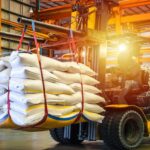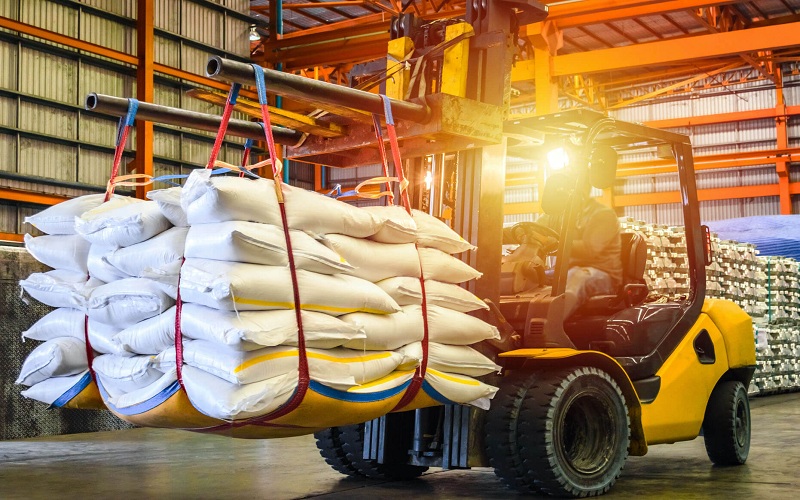Goods constitute a vital part of their daily lives. A product is anything that may be traded for another product of the same sort in a business transaction. Grain, gold, meat, oil, and natural gas are all examples of commodities. In addition to standard securities, Commodities can help investors diversify their portfolios. Because commodity prices are inversely linked to stock prices, some investors rely on commodities even during market instability.
Trading commodities used to take a lot of time, money, and experience, and it was largely reserved for professional traders. Today, there are various methods to get into the commodities market.
What is Options Trading and How Does It Work? What is the mechanism behind it?
What is Option trading It might appear to be more challenging at times. Consider the following if you’re seeking for a simple definition of options trading:
Option trading is the purchase and sale of commodities that provide you with the right to buy or sell a certain security at a specific price on a specific date.
An option is a contract that is linked to the underlying asset. B. Stocks or other types of financial instruments. Option contracts can last anything from a day to several years. You have the opportunity to trade the underlying asset when you buy an option, but you are not obligated to do so. It’s called exercising the choice if you choose to do so.
You have total control over your trading decisions and transactions when you are a do-it-yourself investor looking into options with a self-managed account. However, this does not imply that you are alone.
Many trading groups are forming to discuss current market conditions and options trading tactics.
Special Characteristics of the Commodities Market
In the broadest sense, the basic principles of supply and demand drive the commodities markets. Changes in supply have an influence on demand; a lack of supply leads to higher pricing..So any fundamental disruptions with inside the deliver of a commodity, including a giant fitness problem that influences cattle, can result in a spike with inside the commonly strong and predictable call for for livestock.
Price changes can be influenced by global economic and technical advancements. For example, the rise of China and India as significant industrial actors (and hence increased demand for base metals) has resulted in a reduction in the supply of metals such as steel in other regions of the world.
Commodity trading’s history
Commodity trading is a centuries-old profession with a longer history than stock and bond trading. Many civilizations’ emergence may be directly tied to their capacity to create intricate trade networks and enable commodity exchange.
Commodities are still traded all around the world in current times. Commodity exchanges are physical venues where commodities are exchanged, and organizations set up to enforce laws governing standardized commodities contracts and associated investment commodities trading.
Some commodities exchanges have merged or collapsed in recent years. Most exchanges across the world, including those that specialize in a specific group, have various items in stock.
Type of product
Metal, energy, livestock, meat, and agriculture are the four primary categories of trade commodities.
Metal
Gold, silver, platinum, and copper are all metals. Some investors may opt to invest in precious metals, particularly gold, during market turbulence and bear markets since precious metals, particularly gold, are dependable metals with genuine transferrable worth. Investing in precious metals may also be used to protect against periods of excessive inflation or currency devaluation.
Crude oil, kerosene, natural gas, and gasoline are energy products. Higher oil prices have traditionally resulted from global economic expansion and diminishing oil output from existing wells throughout the world, as oil supply decreased and demand for energy-related products rose simultaneously.
Energy
Investors who want to get into the energy commodities market should look at the recession, how the Organization of Petroleum Exporting Countries (OPEC) is relocating alternative energy sources (wind, solar, biofuels, etc.), and new technological breakthroughs. You must also know if you were the one who did it. Anything that aspires to replace oil as a major energy source has the potential to have a big influence on energy commodity market pricing.
Corn, soybeans, wheat, rice, cocoa, coffee, cotton, and sugar are agricultural goods. During the summer or weather changes, grains in agriculture can become exceedingly unstable. Population increase, combined with restricted agricultural supply, can give investors interested in the agricultural industry opportunities to profit from growing agricultural prices.
Direct investing in commodity futures contracts may be extremely dangerous, particularly for new investors, because the market is quite unpredictable. The large earning potential has the drawback of increasing the risk of loss. If the trade goes against you, you might lose your initial investment (and possibly more) before you can terminate your position.
The majority of futures contracts allow you to buy options. Futures options provide a low-risk way to participate in the futures market. Paying a down payment instead of complete down payment is one approach to purchasing an option. The option allows you to continue the transaction after the contract has expired, although it is not required. As a result, we restrict the loss to the purchase option’s cost if the price of the futures contract does not move in the predicted direction.

 Optimising Employee Transport Management: Top Strategies for Efficient Commutes
Optimising Employee Transport Management: Top Strategies for Efficient Commutes  The Ultimate Guide to Choosing the Right Lifting Slings for Your Project
The Ultimate Guide to Choosing the Right Lifting Slings for Your Project  Easy Steps to Apply Online for Axis Bank Personal Loans
Easy Steps to Apply Online for Axis Bank Personal Loans  Plan a Stress-Free International Trip with Best Foreign Travel Insurance
Plan a Stress-Free International Trip with Best Foreign Travel Insurance  The IPO Process Explained: Steps to Launching a Successful Public Offering
The IPO Process Explained: Steps to Launching a Successful Public Offering  Essential Features to Look for in a Trading Broker
Essential Features to Look for in a Trading Broker  Factors That Influence prices on the Gold Market
Factors That Influence prices on the Gold Market  Personal Loans for Women in India: Empowering Financial Independence
Personal Loans for Women in India: Empowering Financial Independence  Investment and Insurance: The Dual Benefits of Unit Linked Plans
Investment and Insurance: The Dual Benefits of Unit Linked Plans 






